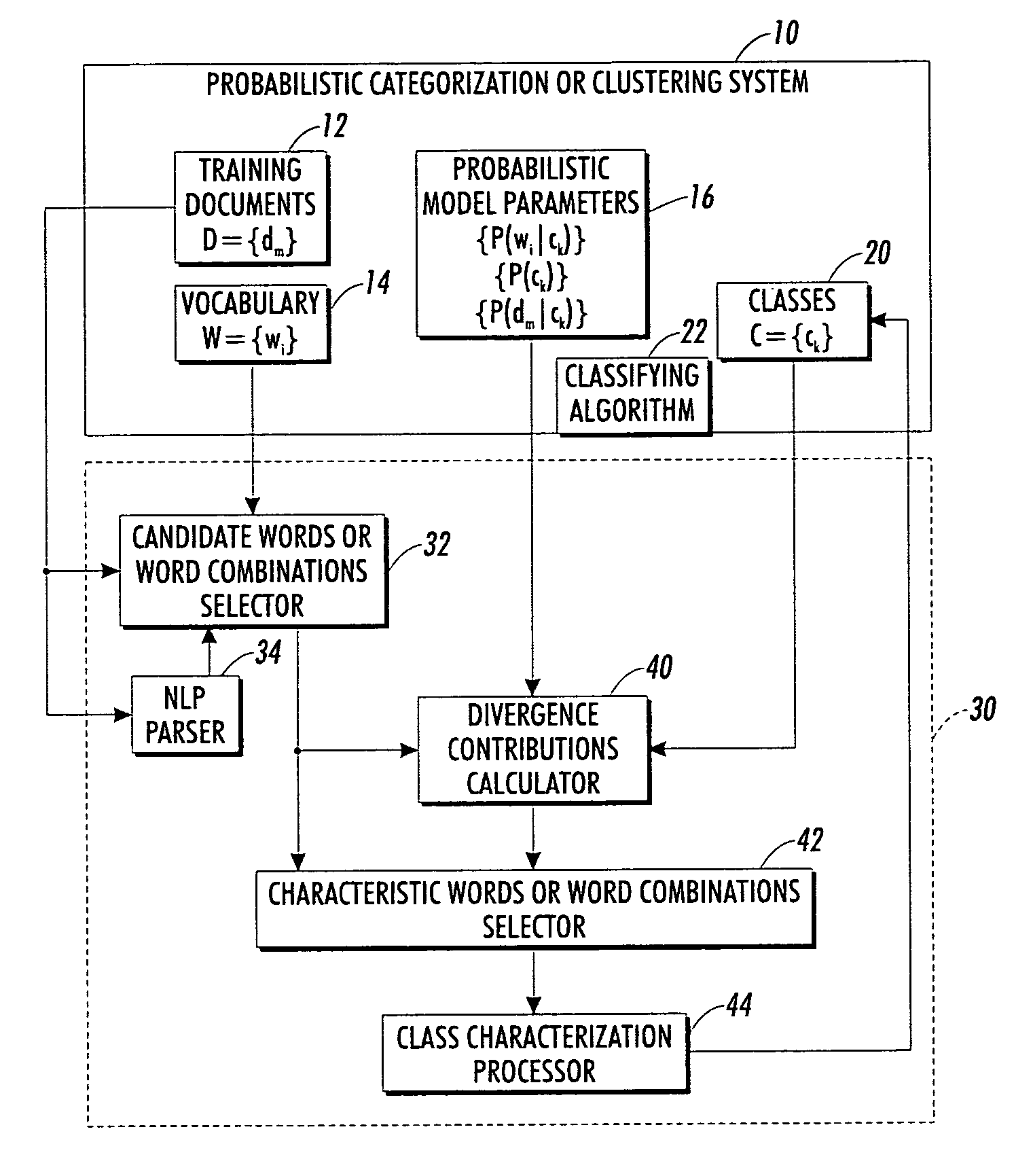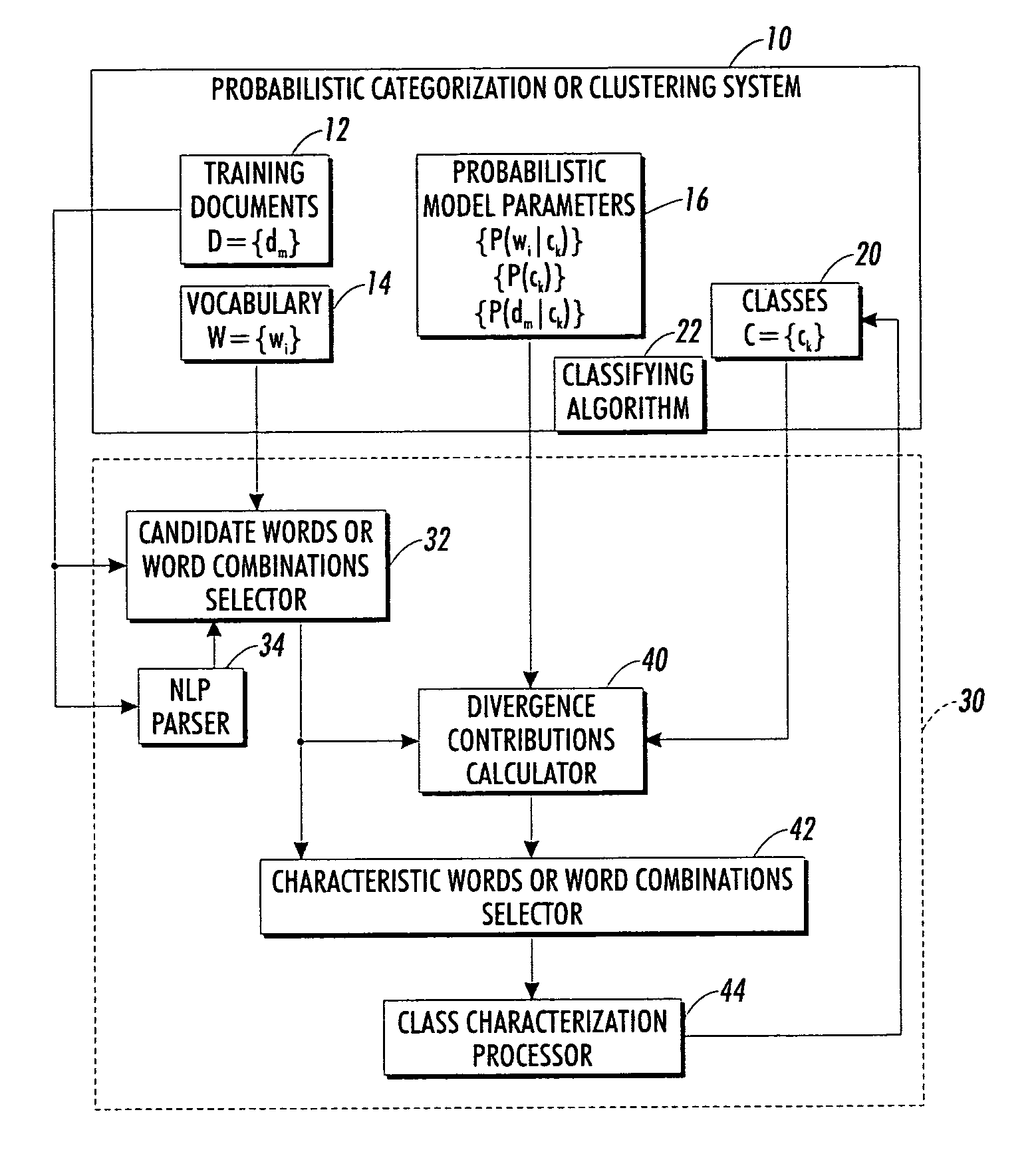Class description generation for clustering and categorization
a class description and clustering technology, applied in the information field, can solve the problems of little or no user guidance, difficulty in class-distinguishing keywords or semantic class descriptions,
- Summary
- Abstract
- Description
- Claims
- Application Information
AI Technical Summary
Benefits of technology
Problems solved by technology
Method used
Image
Examples
Embodiment Construction
[0019]With reference to the FIGURE, a probabilistic categorization or clustering system 10 has been trained using a set of training documents 12 to identify a set of vocabulary words 14 and probabilistic model parameters 16 suitable for henceforth assigning unclassified documents to one or more classes of a group of classes 20 based on a classifying algorithm 22 that classifies documents based on application of the probabilistic model parameters 16. For convenience of description, the notation W={wi} is used herein, where wi (or simply w) denotes a vocabulary word and W denotes the set of vocabulary words 14. Similarly, the notation D={dm} is used herein, where dm (or simply d) denotes a training document and D denotes the set of training documents 12 used to train the probabilistic categorization or clustering system 10. Similarly again, the notation C={ck} is used herein, where ck (or simply c) denotes a class and C denotes the set of classes 20 of the probabilistic categorization...
PUM
 Login to View More
Login to View More Abstract
Description
Claims
Application Information
 Login to View More
Login to View More - R&D
- Intellectual Property
- Life Sciences
- Materials
- Tech Scout
- Unparalleled Data Quality
- Higher Quality Content
- 60% Fewer Hallucinations
Browse by: Latest US Patents, China's latest patents, Technical Efficacy Thesaurus, Application Domain, Technology Topic, Popular Technical Reports.
© 2025 PatSnap. All rights reserved.Legal|Privacy policy|Modern Slavery Act Transparency Statement|Sitemap|About US| Contact US: help@patsnap.com



